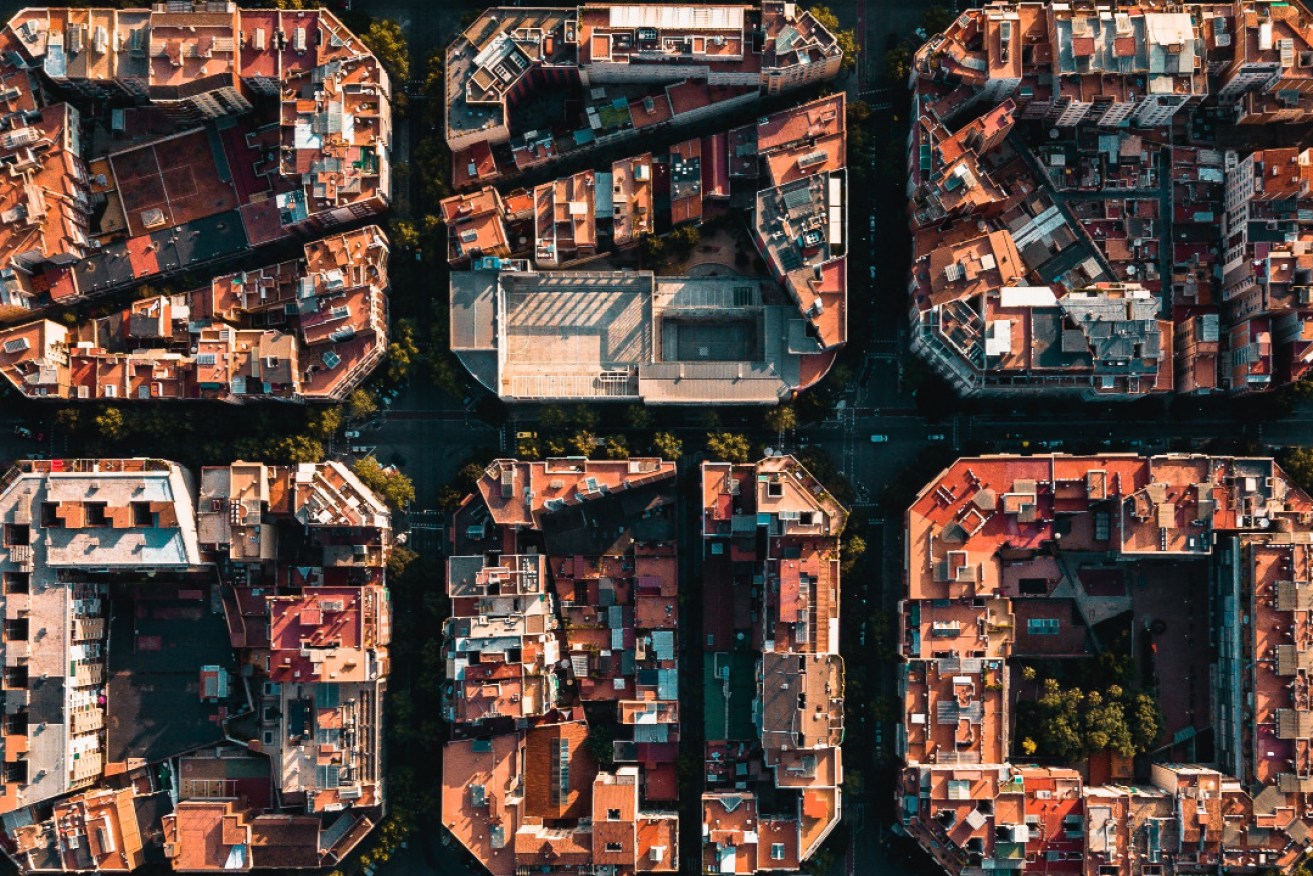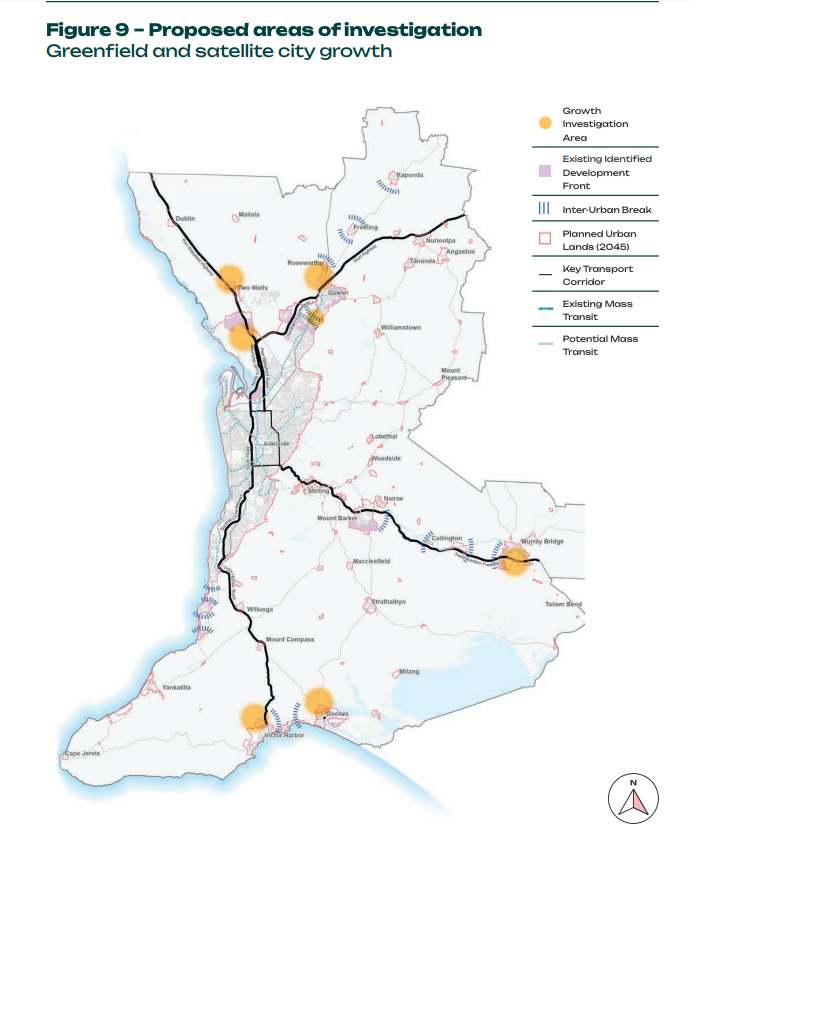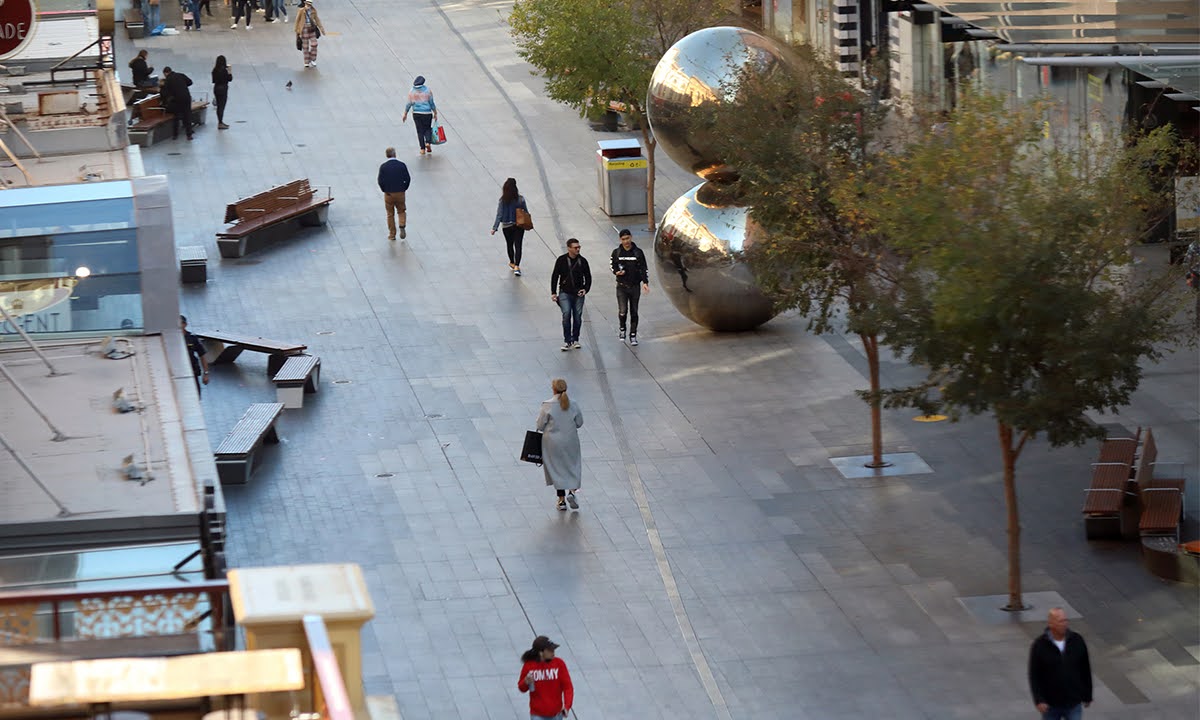Flatlining Adelaide needs to grow up, not out
Adelaide’s heart lacks a pulse and the State Government’s plans for urban sprawl will only make this worse, argues Luke Lombe.

Barcelona's "supersquares" concept is an example of transformative urban design.
The Greater Adelaide Regional Plan Discussion Paper was released on August 14 and is open for public comment and consultation until November 6. It is a plan that asks where and how we should develop Adelaide and accommodate our growing population.
Our city is at a critical juncture. The Greater Adelaide Regional Plan is more than just a proposal on paper: it’s the blueprint for our future. And it looks like our future will be dominated by long drives across an ever-expanding city.
With urban infill targets in both the 2010 and 2017 30-Year Plans for Greater Adelaide recently scrapped, the agenda being pushed by Planning Minister Nick Champion and the Malinauskas Government in the latest plan is one of urban sprawl.
As we navigate the complexities of urban planning, it is increasingly evident that the future vitality of Adelaide lies in strengthening our core, not expanding our boundaries.
Let’s talk numbers.
Greater Adelaide is home to 1.5 million residents spread over a vast 10,873 km², housing only 139 people per square kilometre. Contrast this with Greater Sydney’s 428, Melbourne’s 508, LA’s 799 or New York City, a paragon of urban vitality, with a staggering 10,742 people per km², and it paints a telling picture.
Greater Sydney and Los Angeles are both a little more than 10 per cent geographically larger than Greater Adelaide, yet our population is orders of magnitude smaller than both. Greater Adelaide actually has a larger footprint than Greater Melbourne, but less than a third of its population.
It would seem that we already have the space – we are just not using it well.
Sadly, Adelaide’s CBD is largely a ghost town that lacks a pulse.
Cities worldwide have faced the same crossroads we face today. The solutions they have implemented shed light on the transformative power of smart urban infill.
Barcelona’s ‘Superblocks’ concept, which repurposes streets for pedestrians and cyclists, has rejuvenated public spaces, improved air quality, and fostered community interactions, with a resultant increase of 200 days life expectancy for the Barcelona population and an annual economic impact of $2.8 billion.
Rotterdam unlocked three million square metres of enriched urban structure through its ‘Klein & Fijn’ (small & beautiful) program.
Portland, Oregon, stands as a testament to the socio-economic and environmental benefits of increased walkability and strategic urban infill, with better infrastructure and housing types than most US cities.
Fukuoka in Japan has been lauded for successfully densifying both residential and commercial city space through building height adjustments that favour higher floor/area ratios.
And closer to home, the rejuvenation of Melbourne’s once-forgotten laneways into bustling cultural hubs offers a neighbouring success story, generating an estimated $2.1 billion per annum for the local economy.
These cities, and many others, chose to build in, not out, realising that the soul of a city lies in its heart, not its peripheries.
A city’s core is its heartbeat, radiating energy, culture, and opportunity. A thriving city centre isn’t just about high rises, it’s about the richness of life they contain. It’s about the aromatic cafes spilling onto streets, the theatres echoing with applause, the galleries showcasing local talent, and the serendipity of urban encounters.
I’ve lived in New York, London, and Shanghai. I know what the spark of vitality feels like when a city is alive… and I know when one is not. Sadly, Adelaide’s CBD is largely a ghost town that lacks a pulse. And with a population that wouldn’t even half-fill Adelaide Oval, it’s really not surprising.
According to The Committee for Adelaide’s 2023 Benchmarking Report, Adelaide has the third lowest population living in and around the CBD compared to 19 similar cities, and is in the bottom 10 per cent globally for population density across the entire city.

The proposed “areas of investigation” for growth in the outer areas of greater Adelaide in the Greater Adelaide Regional Plan discussion paper.
A dynamic CBD is a lifeline for retail, a canvas for the arts, a foundation for cultural diversity, and a stage for entertainment. It’s the magnet that attracts talent and tourists alike, and helps to retain our promising youth, who are far too often vacating our homes for the call of bigger cities such as Sydney and London.
But this isn’t just about culture: it’s a robust economic argument.
Cities that have embraced a denser, vibrant CBD have seen a surge in investment. Property values have increased, businesses have prospered, and job opportunities have burgeoned. Such a city centre creates a positive cyclical effect: more residents lead to more businesses, which in turn attract more residents and visitors.
As the population density increases, the public transport system thrives and becomes more efficient and profitable while reducing congestion and pollution. Local businesses, from artisanal bakers to burlesque bars to high-end boutiques, benefit from the steady footfall, injecting life and commerce into every corner.
And given the role that culture and vibrancy have in talent attraction, this has a measurable impact on Adelaide’s ability to attract the kind of talent that can help to drive innovation and propel the state’s economy forward.
Furthermore, the fiscal prudence of high-density urban projects is undeniable and the opportunity to reshape our city is clear. Commercial office vacancies in Adelaide are among the highest in the world, presenting an excellent opportunity for retrofitting and repurposing. Higher-density living also means more revenue for the Adelaide City Council, lower fees, and better services.
Building in our CBD is, on average, 2.5 times more cost-effective than greenfield developments. It is far more economically viable to build up than out.
Building out in greenfield areas represents not just expensive urban sprawl, but also an encroachment into fertile land. Today’s agricultural zones may very well be tomorrow’s housing subdivisions, and while this may address immediate housing demands, the long-term environmental and economic consequences are very real.
Urban sprawl will mean increased infrastructure costs, longer commutes, a higher carbon footprint, and loss of natural habitats. Just ask Gary the Goat.

Adelaide’s CBD desperately needs more people, according to Luke Lombe. Photo: Tony Lewis/InDaily
Some arguments offered against urban infill and higher-density living include design quality, parking issues, and tree loss. These are weak arguments and easily overcome.
Others decry families living in apartments, but the statistics tell a different story. Single-person dwellings have grown by 78 per cent over the last 30 years, and this trend is expected to continue.
And while apartment life for singles is a no-brainer, family living is also a lot better than you might expect. Public parks and communal spaces flourish near densely populated areas as people spend more time outside, leading to better health outcomes. And with 7.6 square kilometres of under-utilised parklands surrounding the CBD, and five public parks within the CBD, inner-city residents have plenty of green space to explore.
Studies have shown that urban vitality is stronger, with more frequent social interaction, in higher-density living spaces. Kids play together in public playgrounds instead of walled off in their own backyards. Social cohesion is simply better.
The arguments in support of intelligent infill are numerous. The arguments against are flimsy at best.
Adelaide, it’s time to ‘grow up’.
As Adelaide residents, we must ensure that our decisions are enlightened, transparent, and based on our collective best interests. The city’s growth should not be dictated by vested interests, lobbyists, or bureaucrats with little international experience and even less idea of what ‘good’ urban planning really is, but instead, be driven by a shared creative vision for an inclusive and vibrant future.
The choices we make today will echo through generations. Let’s ensure that the story we write for Adelaide is one of innovation and vibrancy.
We owe it to ourselves and future generations to build an Adelaide that thrives in its heart, ensuring every beat resonates with life, culture, and opportunity.
Luke Lombe is a founding partner of Faculty Group, a Web3 Venture Studio based in Adelaide. He has worked internationally in strategy and communications with brands like Jaguar, Under Armor, Four Seasons Hotels and BHP.




